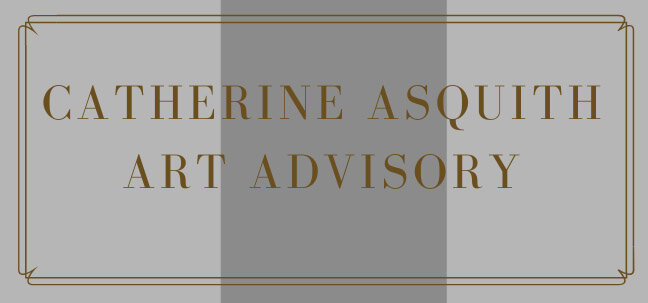Peter D Cole, sculpture commission, 2005, PWC, Freshwater Place, Melbourne
Walking through our corporate centres and precincts in Melbourne, one is often met with some superb examples of contemporary art installations; within public buildings’ foyers, in communal courtyards adjacent to a corporate headquarters, and welcoming guests to inner city hotels. Imagine for a moment, these same spaces bereft of such artwork…
The CBD of any city is, let’s face it, reflective of the culture, its population, its values. Property developers, architects, town planners and the like, have had an enormous influence over the years on how we experience our cities. Thankfully, these days, numerous buildings, office spaces and residential towers, have been planned and constructed with parameters allowing for artworks.
Similarly, artists have developed and extended their practise to allow for these types of public art commissions, and have thereby created lively and dynamic spaces.
Bringing nature into the city
Artists invariably derive inspiration from their immediate living and working environments. Regionally-based Victorian Peter D Cole puts ‘nature on the stage’ with his ‘urbanised’ interpretations of nature. His sculpture commission of 2005, a manifestation of playful yet beautifully balanced conjoined sculptural archetypal elements such as tree, moon and stars, and the like, and created from stainless steel and powder-coated primary colours welcomes workers and visitors alike at Freshwater Place in Southbank.
Corporate message
The presence of contemporary art installed within a corporate’s head office or flagship building also suggests a forward-looking enterprise, a preparedness to engage with its community.
Art in public spaces, as part of a building’s structure or indeed, as part of a corporate art collection, adds a cultural edifice – whether to that corporate’s identity, the building’s spaces, the locale and immediate environment of that building. Its benefits resonate with its inhabitants, the clients visiting that building or corporate location, the employees and the general public. As such, it contributes in a very tangible way to the society’s cultural infrastructure.
The installation of contemporary art – manifested in any of its genres – can have an educative and interpretative function within the building in which is it placed. A very good example of this concept is Janet Laurence’s “Water Veil” at the Council House 2 (CH2) building in Melbourne.
Janet Laurence, “Water Veil”, 2006, commission, 2006, Council House 2 (CH2) Building, Melbourne
A diaphanous, experiential and reflective glass veil that transforms the window between the foyer and the public space of the street into a membranous fluid space, “Water Veil” expresses and reveals the transformation and purification of water, reiterating the black water treatment within the building as well as expressing purity and translucence representing the purification of water.
Laurence’s “Water Veil” denotes a very direct educative and interpretive function within the building and from the public space outside creates a dramatic effect, serving to amplify the functional aspect of the CH2 building as environmentally sustainable, in other words, quite literally highlighting a corporate message.
Nowadays, corporate responsibility to its community is higher on the agenda, and part of a corporate’s mandate must service the community at large in some way: incorporating art within its spaces meets one albeit small, aspect of this requisite.
Art for daily inspiration
Inclusion of public art commissions within our built environment, in foyers, adorning a façade, or inhabiting a causeway, contributes to the visual ‘documenting’ of our history; it reflects our growth and development, occasionally our current societal issues, and sometimes our collective values. But equally important, it provides a visual stimuli, an aesthetic pleasure, a thought-provoking moment; an added dimension to our daily lives.
Marion Borgelt’s site specific “Candescent Moon” of 2011, installed at 101 Collins Street, is a case in point. This large scale sculptural relief suggests the universal themes of sequences, celestial orders and lunar rhythms. These ideas are particularly pertinent to the modern corporate lifestyle, where daily life balances the restrictions imposed by cycles of time and the forces of nature’s flux and unpredictability.
Interestingly, Borgelt’s work is intended to be interactive; that is, as the viewer moves around the front of the work, its appearance and nature change from light to dark and from one texture to another. This sequential change can represent a change in time such as the passing from day into night.
The work has a timeless quality, bridging the gap between the everyday and the planetary by acting as a reminder of our daily life while indicating our part in a larger, cosmic structure.
Marion Borgelt, “Candescent Moon”, 2011, timber, polyurethane, gold leaf with shellac varnish, 5710 x 1370 x 120 cm, 101 Collins Street, Melbourne. Photographers: Shannon McGrath and Marion Borgelt
Bringing contemporary art into our built environment clearly comprises many positives for our society: beyond what has been briefly elucidated above, art can start a conversation; open a dialogue. At its most fundamental, art expresses an idea, an observation, and/or an emotion. It enlivens our consciousness, and sometimes changes our experiences and it stimulates, nourishes and feeds our senses. In so many ways, at its most fundamental, art contributes to the ‘wealth’ of our culture.
©Catherine Asquith October 2017



